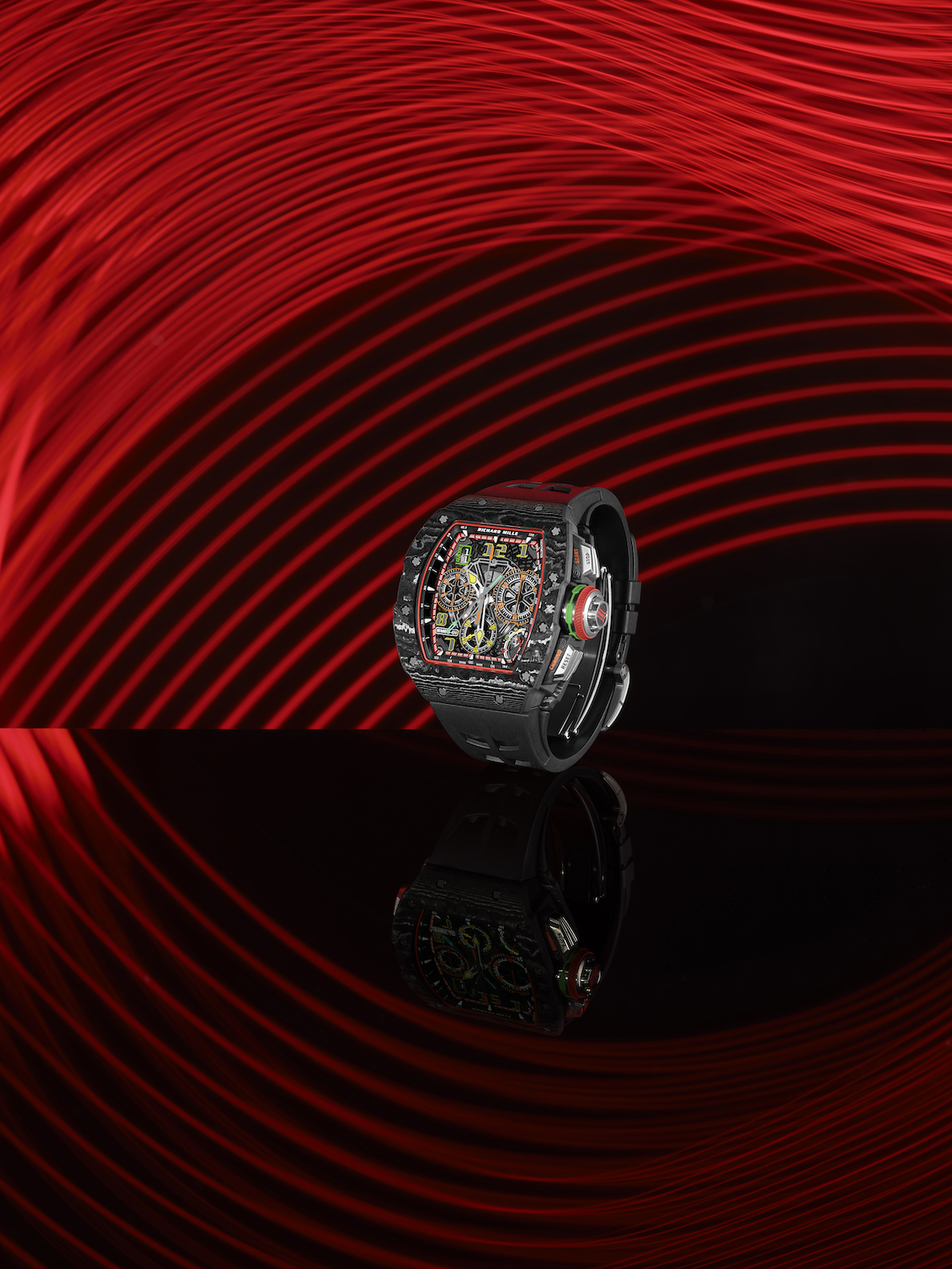This chronograph embodies the full breadth of Richard Mille’s technical mastery, expertise, and design cues.
When Richard Mille’s first watches appeared on the market in 2001, large, tonneau-shaped cases and nontraditional movement design quickly became the brand’s signatures. And the timepieces contained so many new elements and materials that the watchmaker was the first to use, the company attracted immediate and serious attention. Richard Mille opened the door to a new era in luxury watchmaking, and its special tonneau shape truly became synonymous with the brand.
Holding fast to the best of these elements and improving on them, 19 years later Richard Mille introduced its first automatic split-seconds chronograph, and in 2024 several new versions of it arrive in the collection. Its popularity is warranted: this is a watch that gives its owner the supreme chronograph experience without having to worry about winding the complicated movement—even though the splitseconds chronograph is one of the most difficult complications for a brand to master.
A chronograph that embodies the full breadth of Richard Mille’s technical mastery, expertise, and design cues, it is less its technical looks that make this watch a perfect dream machine for the wrist and more its technical approach, which includes using an unusually high five- Hertz frequency to ensure maximum precision and the ability to measure time to one-tenth of a second.
One of the RM 65-01’s interesting new elements is the obvious red button at 8 o’clock to rapidly wind the automatic movement: 125 presses of this Quartz TPT pusher fully wind the watch, though one may also do so in the traditional manner using the crown should it not have been worn for more than 60 hours.

An easy-to-use function selector is included: the wearer need only push the notched button marked “select” in the centre of the crown to choose one of three functions, which are displayed by a hand on the dial between 4 and 5 o’clock. These functions include traditional winding (w), date adjustment (d) and time setting (h). Another excellent element of the 600-component movement is the rotor’s variable geometry, which allows the component’s inertia to be shifted by moving the blades, making for a better winding yield based on how active the person wearing the watch is.
Now let’s talk about the RM 65-01’s visuals, starting with the dial. The hyper-functional dial is actually perfectly legible when you get used to it as it is colour-coded to the watch’s functions, dictating the aesthetic. Yellow is for time: hours, minutes, small seconds, including the numerals and tips of the hour and minute hands. Green is for the date. Orange is for the chronograph and its counters, though to avoid any confusion the split-second hand is blue. Red is linked to the winding. Outside of the colour coding, a tachymeter scale with indices coated in Super-LumiNova is positioned around the flange. Using the chronograph hand, the tachymeter scale can calculate an average speed.
And this brings us to the 44.5 x 49.94 x 16.1 case of this latest version, which is mainly crafted in grey Quartz TPT (it is also available in Carbon TPT, red gold, and titanium in the standing collection, while earlier in 2024 limited-edition models in dark yellow and pastel-blue Quartz TPT appeared). Quartz TPT is a composite material created by stacking layers of silica and adding resin. “TPT” stands for “thin ply technology,” which describes how 45-micron layers of silica work together with resin that acts like a glue, keeping them together.
When the materials are heated at the extreme temperature of 120°C, the resin flows between the layers of silica, binding them. When the materials cool down again, the resin hardens to create a fused, solid, light material. This new process and substance, which was developed together with Saint-Gobain Quartz and Advalite, is proprietary to Richard Mille in the watch industry.








